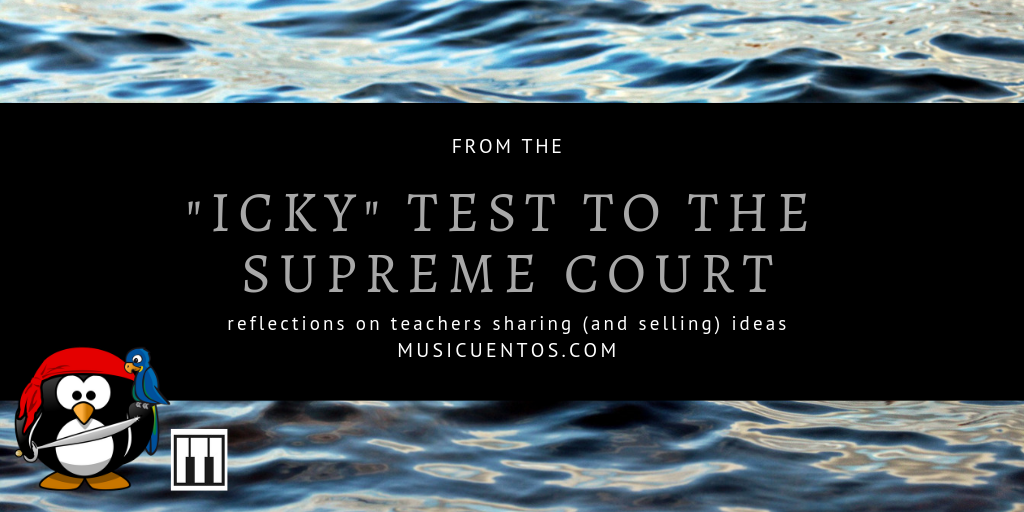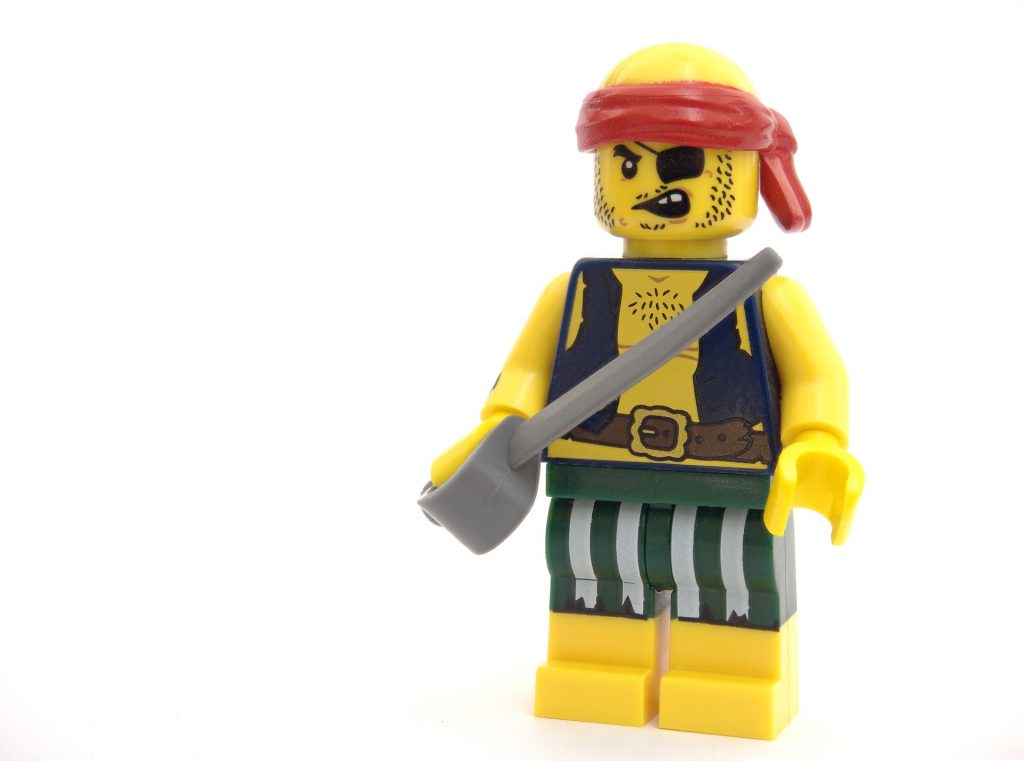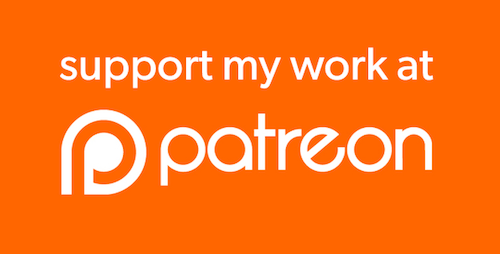Last year, a fellow homeschool parent sent me a file she’d downloaded from an early childhood education resource site. “I’m sure it’s fine, because it was free,” she wrote. But this email came to me after probably years of disquiet and investigation into what exactly is okay for teachers to use and reproduce in the classroom, and so I read the author’s limitation. No distribution was “allowed.”
But why? What was the harm? After all, it was a free resource, right? And “allowed” by whom – I mean, did she break the law there? (Spoiler alert: unethical, yes; law-breaking, no.)
Here’s the problem: creating such resources was this author’s job, and she used this particular one as a way to build an email list, one of the most effective ways to market to a target audience. By receiving the document as a forward instead of signing up for it on the author’s website, I wasn’t on her list, so she couldn’t try to make a living by selling me something similar in the future. My friend had stolen from this author one of the primary ways she builds an audience for her paid materials.
Another hat I wear is director of an ESL program for refugees and other newcomers. Between Oxford Picture Dictionaries, workbooks, downloads, and ProLiteracy materials, we spend about $45 per student in materials, and we are an all-volunteer organization funded completely by donations. I can’t tell you how many times someone has suggested to me that we copy the books we purchase. I feel like some sort of mean guard dog, protecting a big business against the little intruders. No, I say again and again. It’s illegal to copy the books in order to avoid spending money on them. I get it, it’s painful to watch a $25 dictionary walk out the door and not know if it’s coming back, but we have to find another way.
That same feeling makes this post a little difficult to write. It feels self-righteous and judgmental. For that reason, I’ve waited a long time to reflect aloud on the widespread misuse of intellectual property in the education field, and specifically among world language teachers. After all, aren’t we all doing our best to provide our students with the best materials given our individual situations? Let’s face it, those people are making a lot more money than we are anyway, right?!
This post is written on the premise that we cannot do our best and also be abusing someone else’s rights to their work. As someone who produces a lot of digital materials, I have a vested interest in encouraging you to comply with digital rights, but it also comes from a strong belief that every day is a day to take the high road, to show our students that example and make this world a better place. And one of the ways to do that is to honor digital rights.

What are the issues here?
I’ve had this post drafted for a long time, and when I thought I had it all together, I asked Stacey Margarita Johnson (you know her from the We Teach Lang podcast) to take a look at the draft. She had just sat on a fair use panel at Vanderbilt University, where she teaches. Her feedback made this post more helpful and accurate – thank you Stacey!
Here at the start, I must make this clear: the purpose of this post is to distinguish among three very important questions.
- What is a copyright violation?
- What is fair use?
- What is ethically questionable?
That is, I want to consider everything from what violations could land you in front of a judge to what may be legally ok but violates what another friend called Grandma’s “icky” test- if it makes me feel “icky” inside, maybe I shouldn’t do it.
Stacey’s feedback helped me realize that I must make you understand that the primary topic of this post is what teachers are repurposing and selling. To be absolutely clear:
This post is primarily about what is ethical in distributing and selling works as a teacher author, not so much about what you use in your own classroom.
That said, in the problems I’ve seen, I’ve seen (and had) several attitudes that lead to us potentially committing a crime by taking and distributing or marketing someone else’s intellectual property.
- We don’t care. The copyright holder is making enough money.
- No one will find out. What could happen?
- We aren’t aware enough of the law to know that we’re breaking it.
This last one is more common than you might think. I’ve come across resources produced by some of the most outspoken opponents of copyright infringement and thought “Whoa, that teacher must not know this activity violates someone’s intellectual property rights.” And I’m preaching to myself. I’m absolutely sure I’ve inadvertently crossed this line on this blog over the last 10 years or in a resource or both or several times. If you find a place where I’ve done something I mention here as being unethical, would you take a minute to let me know about it?
In this post, I hope to address all of these and share with you many things I’ve learned from my research to clarify the issue for us. We have to find and buy into the high road before we can take it.
Let’s talk about fair use
The fact is (or really, it’s muddy, so I should say the fact seems to be) that courts have upheld that teachers have very wide leeway in fair use. If you find something on the internet or in a book or elsewhere that you want/need to use for an educational purpose in your own classroom, it would be very difficult for the publisher or author to win a case against you, even if they expressly forbid the use. The fact is, publishers don’t have the power to prohibit fair use. The legal system has decided you have it, so have fun.
Have fun, that is, without assuming that fair use is unlimited. To quote Jim Kendrick, outside counsel for the Music Publishers’ Association (in the context of music teachers using sheet music),
Fair use is the teachers’ and the performers’ and the lawyers’ nightmare, because there are no clear answers to almost anything.
There are many places you can get a good summary of fair use, and I’d suggest reading the copyright office material directly, but since you’re here, I’ll try my hand at it.
“Fair use,” according to the National Association for Music Education,
allows for teachers to display in the classroom—using a Powerpoint presentation, for example—any materials they have legally acquired.
What does “legally acquired” mean? It means you have express permission to use it, in the way you want to use it, from the copyright holder, whether it’s because you purchased a license (for example by buying the DVD), they granted you permission for free, or they’ve released the material as an open educational resource or under a Creative Commons license.
Other than that, the government sets out four criteria for determining whether something is “fair use” without a license (Look at this infographic from Harvard):
- the purpose and character of the use
You’re more likely to win a “fair use” argument if you are not selling the material. - the nature of the work
Creative, imaginative works like music, stories, and video are a nasty quagmire. You’re much more likely to win a “fair use” argument if the material you’re distributing is news-related or otherwise nonfiction. - the amount and substantiality of the portion used
It’s more likely “fair use” if you use a very small percentage of the overall work, though sometimes even a very small piece was considered a violation because it represented the “heart” of the original. - the effect on the potential market for or value of the work
It’s more likely “fair use” if you aren’t taking away from the original work’s market value.
That last one is pretty easy for us as teachers. With products we distribute related to authentic resources, we’re actually doing more to promote the work than take away from it. I’m sure Francisco Jimenez has sold hundreds more copies of his Cajas de cartón memoir because of my ebook guide, and I’m glad for him. Our respective works are benefiting each other.
Also, if your work is transformative, it’s also more likely to be considered fair use. It’s not difficult for us to hit this one as well. The new material shouldn’t be much like the original, and it’s a good argument for being transformative that our material has a totally different audience. Cajas de cartón was written/translated for the enjoyment of native Spanish speakers, and my ebook guide 1) is a completely different product from the memoir and 2) has a completely different audience: intermediate to advanced Spanish learners.
The problem comes not so much when we use a resource for our own classrooms, and not so much when we distribute (for sale or otherwise) a product based on an authentic resource, the problem comes when we are distributing something that includes part or all of the resource. That is where the waters get so muddy. Once you have taken the resource out of your class and put it in a product available on a blog or on TeachersPayTeachers, it’s possible you’ve entered at least unethical territory, if not illegal. And courts evaluate fair use on a case-by-case basis. That does not sound fun. Publishers are ready to fight, for years, and even if you win, do you want to be that test case? I don’t.
Now let’s talk about individual questions.
What can I do with lyrics to songs?

Don’t you love using music in the classroom? Music transformed my teaching and made me Sra. Musicuentos. Do you display the lyrics, print them and ask students to do activities with them, and use them for other fun, motivating uses? Go right ahead – these uses are very likely fair use, especially if you found licensed lyrics on the internet (see below for two sites that do this).
However – if you are creating resources that contain the lyrics and are distributing or selling them to people, I’m so sorry. I really am. As it turns out, the answer to this question, as it pertains to creating and distributing resources, seems to be: almost nothing.
Let me summarize my research succinctly before I get into the details: it appears to me, someone who is not a legal professional that unless you have purchased a license to do so, you cannot include the lyrics of a song in a resource you distribute for the general public.
I’m going to say that again.
Copyright holders are ready to fight you if you include the unlicensed lyrics of a song in a resource you share.
See my research below and see if you agree.
I think the primary reason we think we can use lyrics in a resource is that they’re just there. Google it. They’re right there on the internet! Doesn’t that mean I can use them? No, it does not. It just means that a lot of people are breaking the law. As a matter of fact, Google is facing backlash for allowing sites that publish copyrighted lyrics to make money off of AdSense ads. A copyright holder there says,
Lyrics are a huge search term on the Internet–these sites (and Google) are probably pulling in hundreds of thousands of dollars monthly, all on the back of copyrighted material.
In other words, he’s the one who did the creative work, and the lyrics sites and Google are getting the money for it.
But no one cares, right? Think again. These music publishers won $6.5 million in damages. For what? For the offending party “displaying lyrics online.” Notice what the judge took into account when deciding on the amount of damages:
information about what LiveUniverse would have been charged had they properly attained license.
You see, it’s not even always about whether you’re making money off of it. The point is what money would the copyright holder have made if you’d gone the legal route to license it. So your solutions to follow the law here seem to be twofold:
- Direct the end user of your resource to find the lyrics themselves.
- Contact the copyright holder and purchase the license.
This really isn’t as expensive as you’d think (sometimes). The Book Designer reports,
The cost of getting permission to use lyrics in self-published books is often affordable, typically between $10 and $50.
after reporting that
using lyrics is particularly risky, not because they are special in the eyes of the law, but because they are owned by music companies that aggressively protect their rights. You could get a lawyer letter demanding you “cease and desist” using the lyrics. Translation–shred every copy of your book, even though the infringing words are 25 out of 95,000. Worse, you could be liable for monetary damages.
See that link for more information on how to obtain a license. Once you buy it, make sure you put “Used with permission” and the notice of the copyright holder on your product.
When I wanted to print lyrics to 3 English songs in the Welcome Packet for our ESL program, I contacted the publisher. We are a nonprofit, volunteer organization, so don’t count on this happening to you, but for 2 songs we were granted free permission and for the third we paid a license fee of $20 to produce 100 print copies. And I now know I probably don’t even need to license that material, because we don’t include it in our Welcome Packets available for download on our website, just for use in class. Fair use!
On the other hand, when a colleague and I wanted to license an infographic for a test we were writing for a state organization, the infographic’s copyright holder wanted $200. Since we weren’t making much more than that on the project, we passed on that one and used something else.
You should also know that some sites do license the lyrics they use. This article explains,
Most [lyric sites] are [breaking the law], but a few, like azlyrics.com and songmeanings.com, are fully licensed.
Note that this means the site can display them alongside ads, not that you can grab them and use them in a for-profit product. For that, again, you’ll need to get your own license. (But it probably does mean you can display them in your classroom to sing along to!)
Other creative work: videos, commercials, etc.
Please listen to this caution from sonicbids, again, in the context of distributing/selling material to the public:
Whenever you use someone else’s copyrighted work without getting the appropriate licenses/permissions, you may be doing something illegal.
Bear with me spelling this out in a very painful way for the TPT community, including me.
- It’s probably unethical and could be illegal to screenshot or download infographics and then include them in a document you distribute, especially in a document that is for sale.
- It’s probably unethical and could be illegal to screenshot movie or music video or short film or commercial scenes and then distribute them, especially in a document that is for sale. (This is the reason macOS will not let you screenshot on DVD player and you have to download a separate video player in order to do this.) BUT: you could make an argument that the number of frames you are using is tiny compared to the vast number of frames taken in a single commercial. The question is, are you ready to go to court and make that argument? From my research, it appears producers are. This material is considered highly creative and especially if it forms the “heart of the work” your argument will be weakened.
- Unless your district has a licensing agreement from the producing studio, you (most likely) cannot show videos on Netflix or other streaming sites using your personal login in class without violating the user agreement. HOWEVER: great news! For one thing, a user agreement isn’t a law. You’re not likely to go to jail for this. Basically the only thing Netflix will do is cancel your account and shut out the email address you used with it. (But… does it violate your “icky” test?)
ALSO: Showing a movie from a legally purchased copy is allowed, and “an instructor’s creation of a film clip compilation is a fair use” which I would guess could extend to using a compilation of shots from the movie, though probably not to distributing that compilation.
The point is that we did not create this material and we do not own it. We can make material based on these resources and do whatever we want with them, but we don’t get to make the rules. (WAAAAH! I want to make the rules!) The producing studio does.
Here’s another important exception: Memes and single-shot images that are not for sale and do not harm the producer seem to be acceptable as fair use, mostly because of two things: the tiny amount of copyrighted material they represent, and the addition of satire in the meme.
Don’t count on this, either, though. You know that socially awkward penguin meme (warning: language)? Getty has been quietly insisting that the image be licensed because they own it.
So, is anything fair game?
Yes. My best interpretation, and the way I generally try to create materials for distribution now that I’ve researched this much, is to create a transformative activity (especially if it’s for sale), meaning it fundamentally changes the purpose and format of the original, and link to the legal copy of the material, or give information on how to find it.
Also pretty much fair game is social media.
Essentially… once you post something viewable by anyone else on [social media], you have forfeited any privacy interest in it.
This (and again, fair use) is why every random Tom and Sasha can get quoted in a news story from what they publish on Facebook and Twitter public posts. It’s why news pieces run Facebook photos and your Instagram photos when someone gets kidnapped or commits a crime or any other number of reasons people end up on the news. Your public Facebook account is not private. So it seems that legally, if you find a public social media post in the target language, you can pretty much do what you want with it. Ethically speaking, this is another question, but legally it seems we’re pretty safe.
I feel the same way about online reviews like on TripAdvisor. The original writer did not create the content with any expectation of compensation or privacy, and your use isn’t interfering with anyone’s creative intellectual property, so I count this as open for use. (No “icky” for me here.)
WARNING- Distributing something you made on a school computer?
I was stunned when I found this out and knew I had to include this information in this post. If you are distributing a resource that you made at school or made on a school computer, be very careful with how you use that material. If it’s not in your employment contract that you own the copyright for classroom materials that you produce, it turns out that your school or district owns it. If you’re making money off of your materials, your district can come after you for a cut or even all of your earnings. Yes, this actually happens. Read more about this crazy loophole over at this blog.
Another resource
In addition to the many links in this post, let me offer two more resources for you. One was recommended via Twitter; try this fair use evaluator to get some advice on whether your material can be classified as fair use. Richard Byrne over at Free Tech for Teachers has posted a free webinar and a link to his presentation on copyright for teachers. It’s totally worth an hour and friendly enough you can put it on play and grade some quizzes while you listen. And if you’re mad enough at me right now, let me just quote his guest Beth in that presentation.
We’re raising a generation of pirates.

The internet’s going on 25 years old now. From what I’ve seen as I navigate resources on the internet, attend presentations, find resources on TeachersPayTeachers, and so on, I would go so far as to say that we have become a generation of pirates.
If even one teacher-author says “Ouch, Sara-Elizabeth, you know, this really stings. I make a nice little conference fund off of that resource bundle you basically just told me was illegally distributed. But I’m going to do the right thing, take it down, and figure out how to do it the legal way,” this post will have been worth writing. And believe me – you’ll feel a whole lot better knowing you can sell as many of the new product as you want without wondering when the cease-and-desist order will come from the company lawyer.
 If Musicuentos has significantly helped you in your language teaching journey, consider becoming part of the “thanks” crew on Patreon. “La lotería” patrons receive every resource I produce, whether it’s a $2 activity or a $50 ebook guide, as thanks for their sponsorship.
If Musicuentos has significantly helped you in your language teaching journey, consider becoming part of the “thanks” crew on Patreon. “La lotería” patrons receive every resource I produce, whether it’s a $2 activity or a $50 ebook guide, as thanks for their sponsorship.
1 Comments
Comments are closed.



[…] wrote an insightful post about fair use that as per usual will take me awhile to unpack all of […]